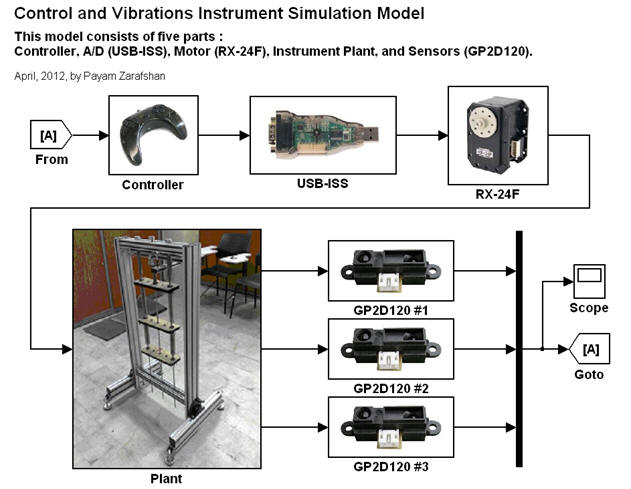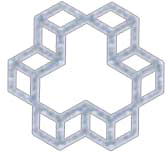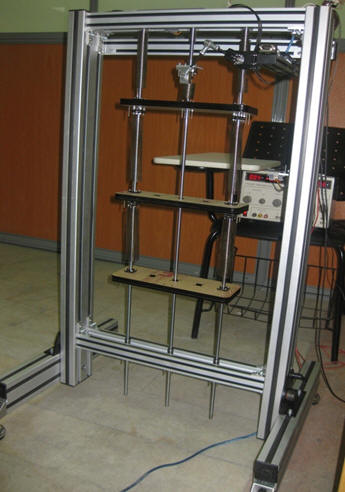Design and Manufacturing of a Vibration Control Test Stand
The developed system is a vibration setup as a conceptual model for the object manipulation operation, to compare various control methods. This conceptual model is used to study the basic analysis of the operation in most object manipulation algorithms, and the setup has been designed for practical implementation of any proposed object manipulation or vibration controller. In fact, developing Multiple Impedance Control for object manipulation was based on considering the proposed benchmark in mid 1990's. In fact, the standard impedance Control imposes a desired behavior on a single manipulator interacting with its environment. Multiple Impedance Control (MIC) enforces a designated impedance on both a manipulated object, and all cooperating manipulators. Similar to the standard impedance control, one of the benefits of this algorithm is the ability to perform both free motions and contact tasks without switching control modes. At the same time, the potentially large object inertia and other forces are taken into account. In this research, the MIC algorithm was used for distinct cooperating manipulators, and using the proposed benchmark system, the response of the MIC algorithm was compared to that of the Object Impedance Control (OIC). It was experimentally shown that in the presence of flexibility, the MIC algorithm results in an improved performance. In fact, under the MIC law, all participating manipulators, and the manipulated object exhibit the same designated impedance behavior. The system is currently used as a laboratory setup, to develop and compare various control strategies for the object manipulation operation.


